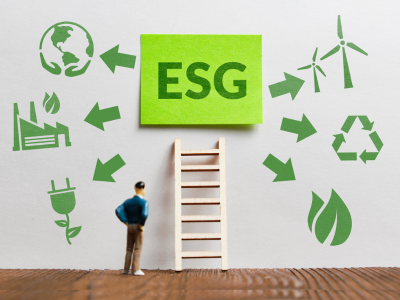In an era where Environmental, Social, and Governance (ESG) considerations are shaping corporate landscapes, effective reporting on the environmental pillar is crucial for companies aiming to demonstrate sustainability and responsibility. Here are key environmental factors that companies should consider in their ESG reporting:
1. Energy Consumption and Greenhouse Gas Emissions:
- Disclose greenhouse gas emissions and energy consumption.
- Outline measures to reduce the carbon footprint, such as adopting renewable energy sources and energy-efficient practices.
2. Waste Reduction and Management:
- Report on waste reduction and management practices.
- Showcase efforts to minimize solid waste, toxic emissions, and water pollution through sustainable waste disposal and treatment.
3. Climate Change Mitigation and Adaptation Strategies:
- Disclose strategies for mitigating and adapting to climate change.
- Highlight initiatives like the use of clean technology, sustainable energy practices, and green building strategies.
4. Environmental Impact of the Company’s Supply Chain:
- Report on the environmental impact of the supply chain.
- Emphasize sustainable sourcing of raw materials, responsible land use, and efforts to minimize ecological impact throughout the supply chain.
5. Product Sustainability and Eco-design:
- Provide insights into the sustainability of products.
- Outline eco-design practices, including measures to reduce packaging material, minimize waste, and manage electronic waste responsibly.
Benefits of Robust Environmental Reporting:
Transparency and Accountability:
- Build trust among stakeholders through transparent reporting.
- Demonstrate accountability for environmental impacts and commitment to sustainable practices.
Risk Mitigation:
- Identify and mitigate environmental risks proactively.
- Strengthen resilience by addressing potential challenges related to resource usage and emissions.
Competitive Edge:
- Stand out in the market by showcasing strong environmental practices.
- Attract environmentally conscious consumers and investors.
Regulatory Compliance:
- Ensure compliance with evolving environmental regulations.
- Stay ahead of regulatory changes by actively participating in sustainable practices.
Embracing Best Practices:
Data Accuracy and Measurement:
- Implement accurate measurement systems for emissions and resource consumption.
- Regularly update data to reflect the company’s current environmental impact.
Continuous Improvement:
- Commit to ongoing improvement in environmental performance.
- Set targets for emissions reduction and resource efficiency and track progress.
Engagement with Stakeholders:
- Engage with stakeholders on environmental practices and goals.
- Solicit feedback and incorporate stakeholder perspectives into environmental strategies.
In conclusion, comprehensive ESG reporting that prioritizes the “E” is integral for companies aspiring to navigate the complexities of sustainability. By addressing key environmental factors and embracing best practices, companies not only meet the expectations of stakeholders but also contribute to a more sustainable and resilient future. The benefits extend beyond compliance, providing a competitive edge and fostering a positive impact on both the business and the environment.




